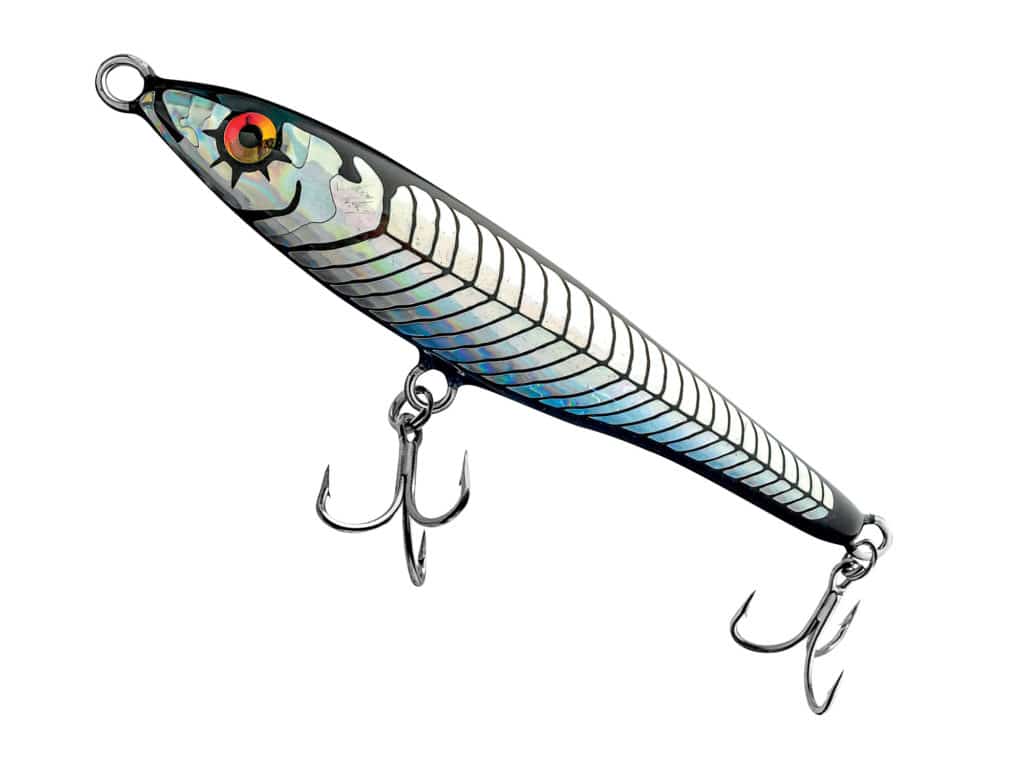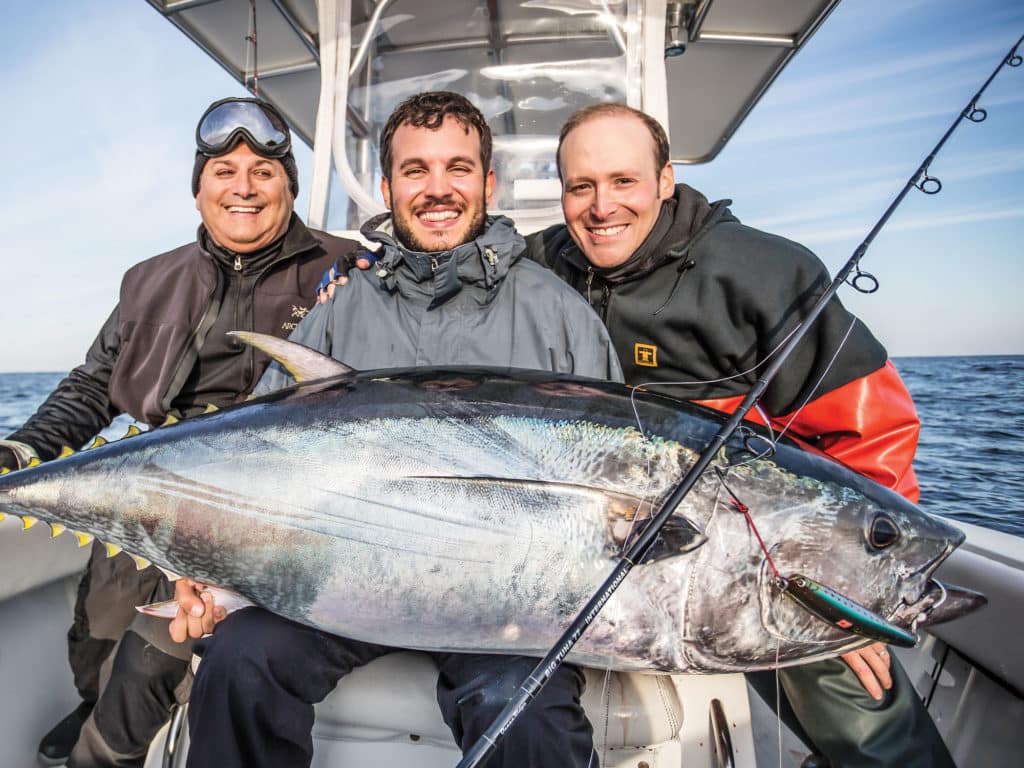
Tough Customer
Rumors of big bluefin tuna crashing striper baits and spooling reels had filled the airwaves, and I was running my 31-foot Contender wide open, heading south from Jones Inlet, New York, in search of what anglers along the coast call “ghosts” — elusive, late-season bluefins sneaking inshore.
It didn’t take us long to spot birds. High flyers at first, soon they all turned, dropped and focused on one particular point in the water where large fish suddenly began to feed.
Once in range, I powered down and yelled “cast!” A stickbait quickly landed just past the surface commotion. A single sweep of the rod and the lure was in the zone. It sat motionless for a second, but one twitch and kaboom! The rod doubled over and the reel screamed, yet the tackle proved up to the task, and, 15 minutes later, we sank the gaff into a 60-inch butterball.
NEW WAVE
A few years ago such a feat wouldn’t have been possible. The advent of spinning gear strong enough to conquer big game while remaining sufficiently limber to cast and work artificials has opened new avenues for targeting bluefins. Cape Cod anglers now catch fish in the 300-pound class on plugs and, occasionally, someone lands one even larger.
It’s a whole new ball game these days with the modern, powerful tackle, and sight-casting topwaters for bluefins is the pinnacle of high-adrenalin fishing. But to succeed you need the right stuff.
WHAT A DRAG
While lots of spinning reels are touted as “tuna ready,” few are truly capable of handling fast and powerful fish that exceed the 150-pound mark. Large size doesn’t automatically make spinners adequate for offshore big game. A drag with capacity for up to 50 or 60 pounds of pressure is essential. You need that kind of stopping power to put the brakes on a bluefin. Equally important is the drag smoothness. “Line has to peel off fluidly, even with the drag locked down at 50 pounds,” notes bluefin ace Capt. Adam Sheerer. “If it starts hesitating or pulsing at that kind of torque and speed, you’re done.”
The required smooth drag generally comes from large-diameter metal and carbon washers, which have to remain smooth and level under high pressure to work properly, requiring a combination of precision, toughness and heat resistance. “Most reels come smooth out of the box,” Sheerer notes, “but there aren’t many that can maintain that after dealing with a couple of 200-pound fish.”
A reel suitable for bluefins also allows you to apply drag pressure gradually and consistently, which is critical during the fight. For instance, Shimano’s Stella SW series has an ingenious wave spring in the drag knob that compresses the drag washers more evenly than conventional coil springs. When you crank the knob down, it increases pressure more gradually. “This drag system doesn’t pulse or ramp up quickly at the end,” notes Shimano rep Doug Rusch. “And that’s when a lot of fish are broken off.”
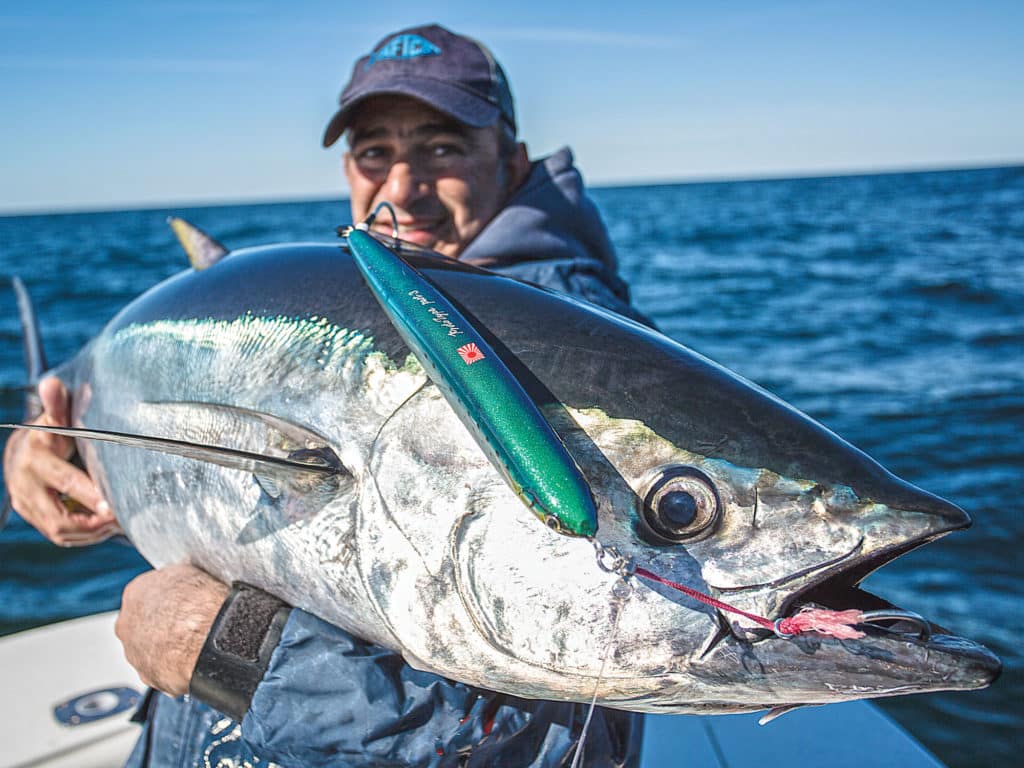
SINGLES
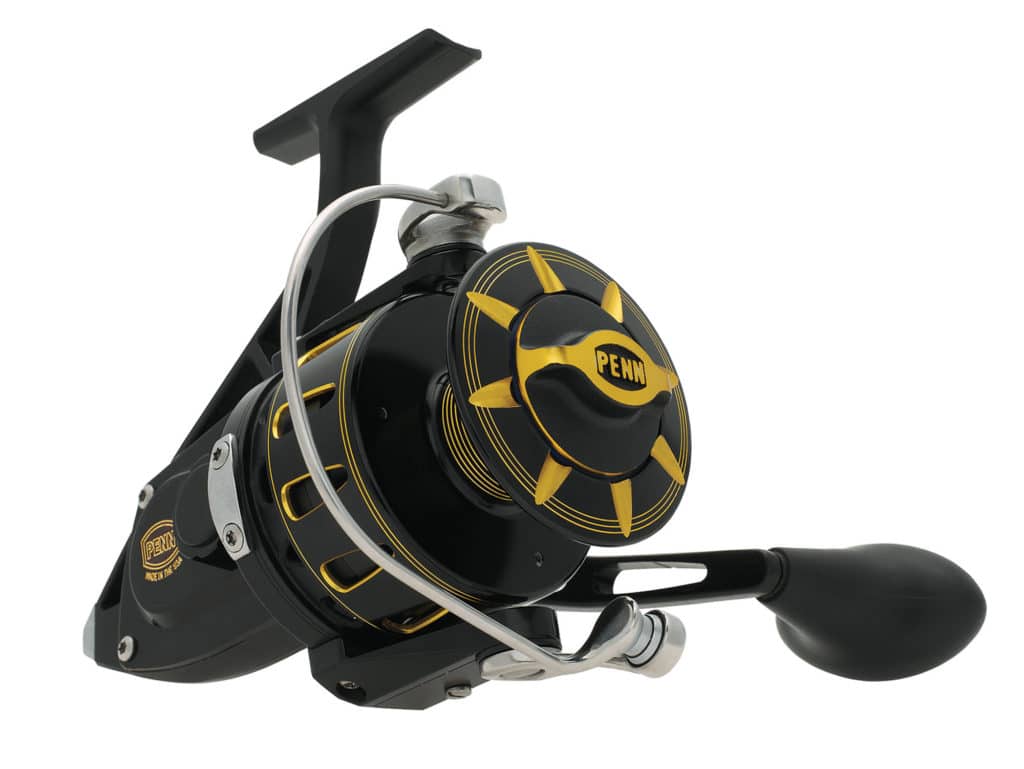
Penn Torque 9000
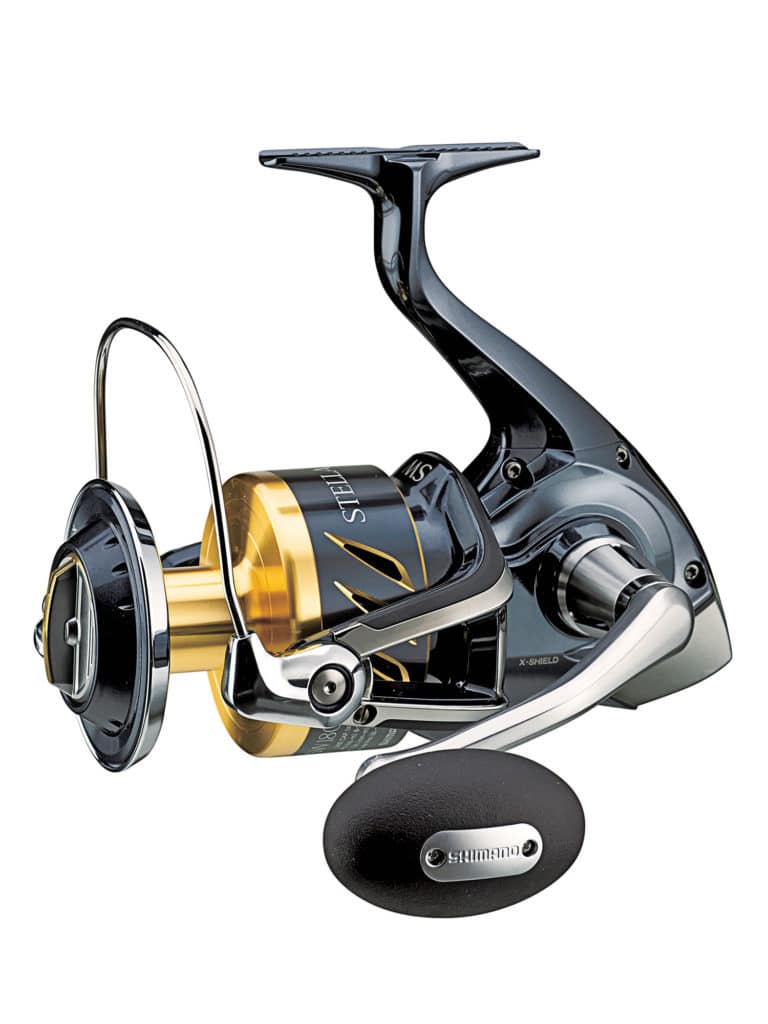
SHIMANO STELLA SW 18000
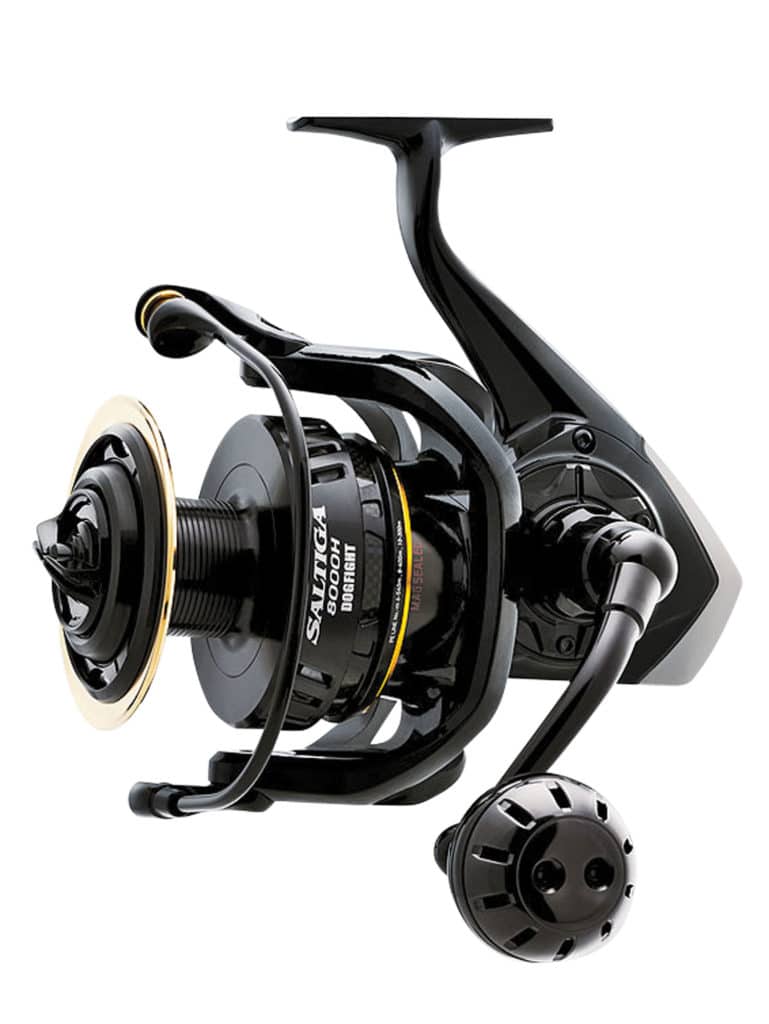
DAIWA SALTIGA G DOGFIGHT 8000
TUNA TOUGH
Although a strong, smooth drag is critical to triumph with bluefins, all other reel components must be able to support 50 pounds of drag pressure during the sustained runs of extra-large fish that can swim more than 40 mph. “Flexing, bending and distorting under load results in misalignment and loss of power,” notes Van Staal Field Sales Manager Capt. Craig Cantelmo. “Any misalignment at the sort of speed and torque innate to bluefin tuna can be catastrophic.”
Tuna-ready spinning reels are composed of hard, rigid and durable materials through and through. “Van Staals are machined out of aeronautics-grade aluminum,” Cantelmo notes. “Not only is there no distortion under load, but machining also allows the parts to be cut at very tight tolerances, so there is very little room for failure.”
The gears of the Shimano Stella SW are made of Hagane steel. “It’s only one notch below a diamond in the Rockwell hardness meter,” Rusch says. Daiwa uses a strong Zaion carbon composite for the rotor in the Saltiga series, which allows for even weight distribution and little flex. It is almost impossible to bend or nick, minimizing the potential for line frays and breakage under heavy pressure.
WATERTIGHT
Once water gets inside, a reel becomes compromised quickly. A big bluefin exposes any corrosion going on inside the gear case. Van Staal produced some of the first spinning reels with a sealed gear case to withstand being dunked in salt water. This is one of the reasons Van Staals, which were previously considered surf-fishing reels, quickly gained popularity among the tuna guys.
The Saltiga G Dogfight, Daiwa’s top contender for bluefin bouts, comes sealed with a magnetic oil that changes density and shape when a magnetic field is applied, preventing water intrusion. “It creates an excellent, low-friction seal for a rotating shaft,” says Daiwa Marketing Manager Curt Arakawa. “It also tightly adheres to the internal components within the reel.”
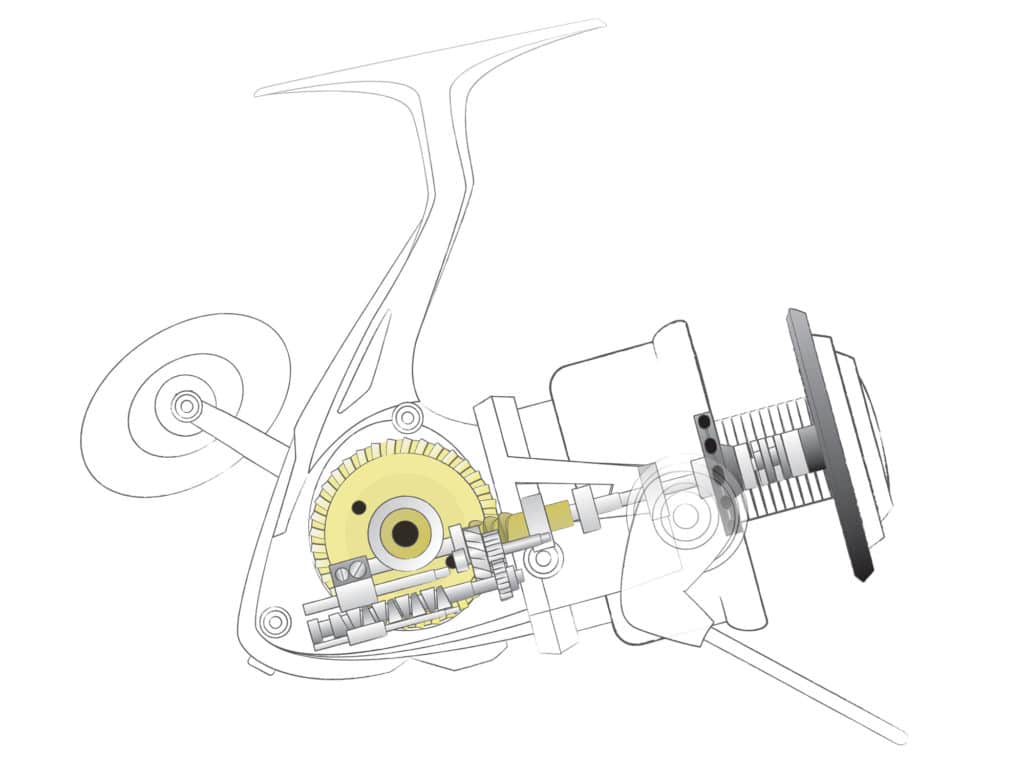
REEL ESSENTIALS
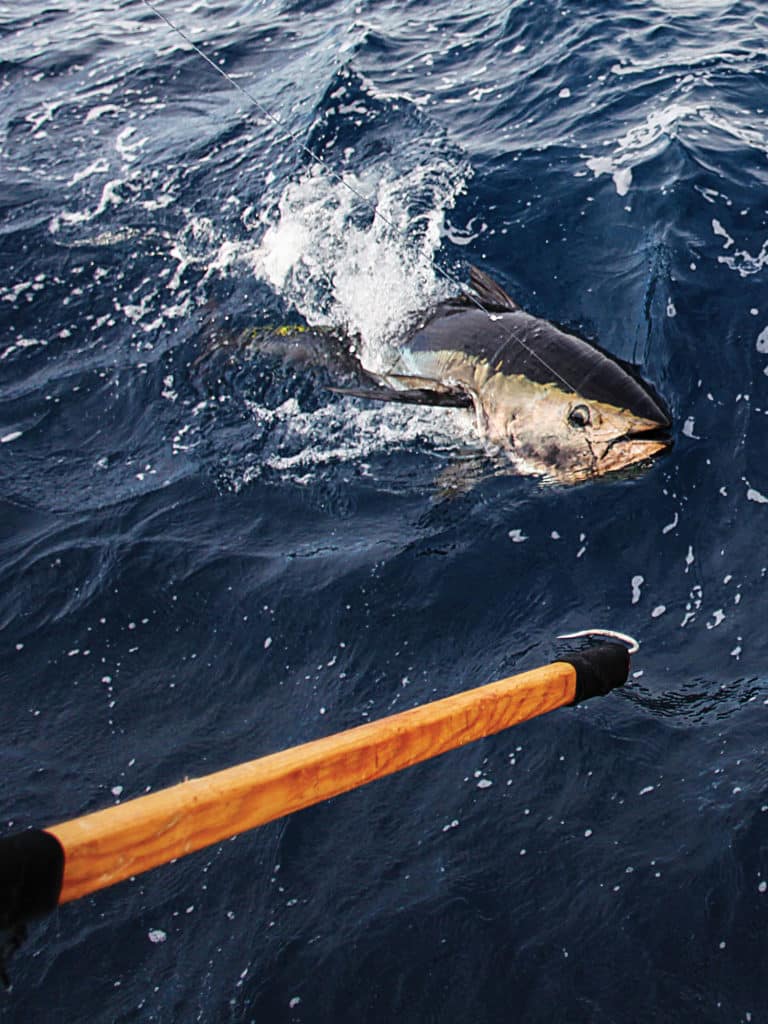
HEADS UP
Just like the reels, spinning rods have come a long way. “Once the right blank tapers and materials were developed, it was game on,” says Cape Cod bluefin guide Capt. Dom Petrarca. “It’s 20-year-old technology in Japan, but it’s fairly recent here,” Cantelmo explains. “The idea is to create a parabolic arch, a triangle between knee, hand and elbow.” This reduces pressure on the angler and increases it on the fish. The rod tip and midsection are generally flexible, while the butt section is stiff and strong.
Length is important. Bluefins are notoriously spotty and skittish, and longer rods enable anglers to reach the fish from a greater distance. “You might make 50 casts, and just one or two get in the feed,” says New Jersey’s Capt. Gene Quigley. “You’ve got to have a rod that can get out there.” However, the longer the rod, the less pressure it exerts when the fish gets vertical. The ideal length seems to be 7½ feet to 8 feet 2 inches.
“The 7-foot-6-inch Smith Tokara 60 was the rod that revolutionized topwater bluefin fishing,” Petrarca notes. “Everyone based their next designs on it.” Today, specialized stickbait spinning rods, like Saltywater Tackle’s Race Point series, offer the perfect blend of backbone and castability.
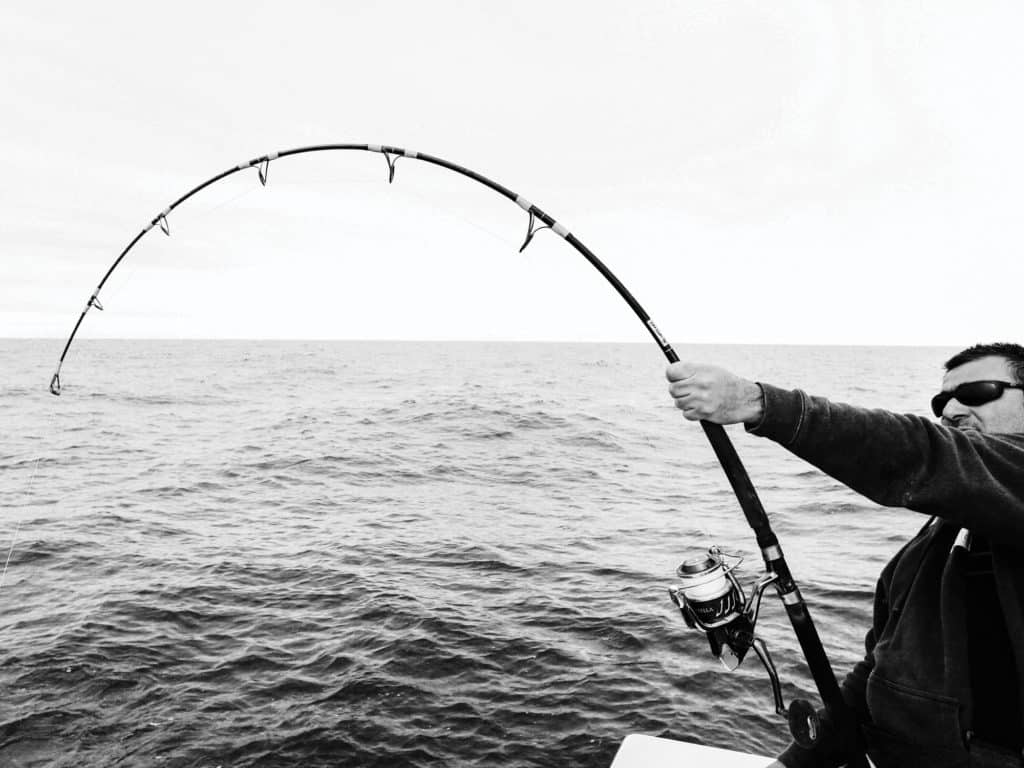
HANG ON
THE CONNECTION
When it comes to line, 60- to 80-pound hollow-core braid is standard. Some pros use 100- or even 130-pound, but you sacrifice casting distance when you move up in line strength.
You can easily splice hollow core without losing any strength, and the number of strands in hollow core is higher than in regular braid, so it’s more durable and abrasion resistant. For a line-to-leader connection, opt for the PR knot or the Slim Beauty.
But to ensure a stronger, seamless connection that eases through the guides, the pros favor a 12-foot, 80- to 100-pound fluorocarbon wind-on leader attached to the line with a loop-to-loop connection. Then, to finish the bluefin-proof system, they tie a 200-pound-test ball-bearing swivel to the end with an improved clinch knot, add a split ring of the same weight class and slip their favorite stickbaits right on with split-ring pliers.
READY TO INTERCEPT
Each year, bluefins migrate along the coast from Maine to North Carolina, and sometimes they show up close to the beach. Casting topwaters at such brutes is a challenging but exhilarating practice. The visual aspect certainly makes for unforgettable outings. So arm yourself with the right gear, wait for news of the fish’s arrival, and just let the games begin.
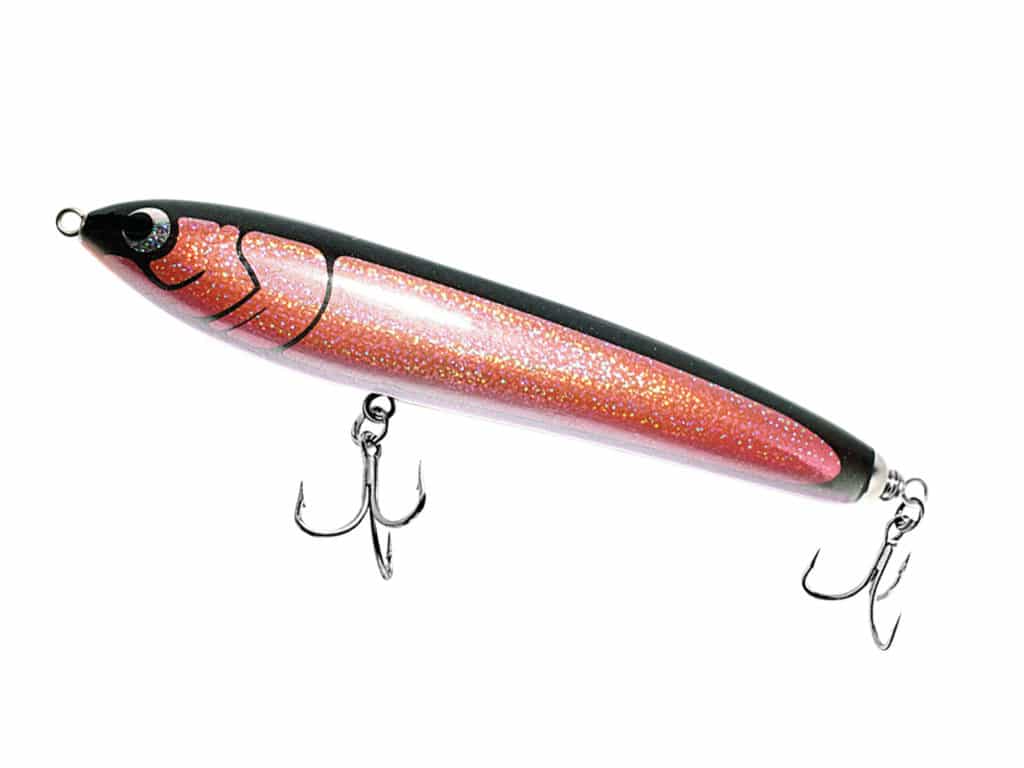
TOP STICKBAITS
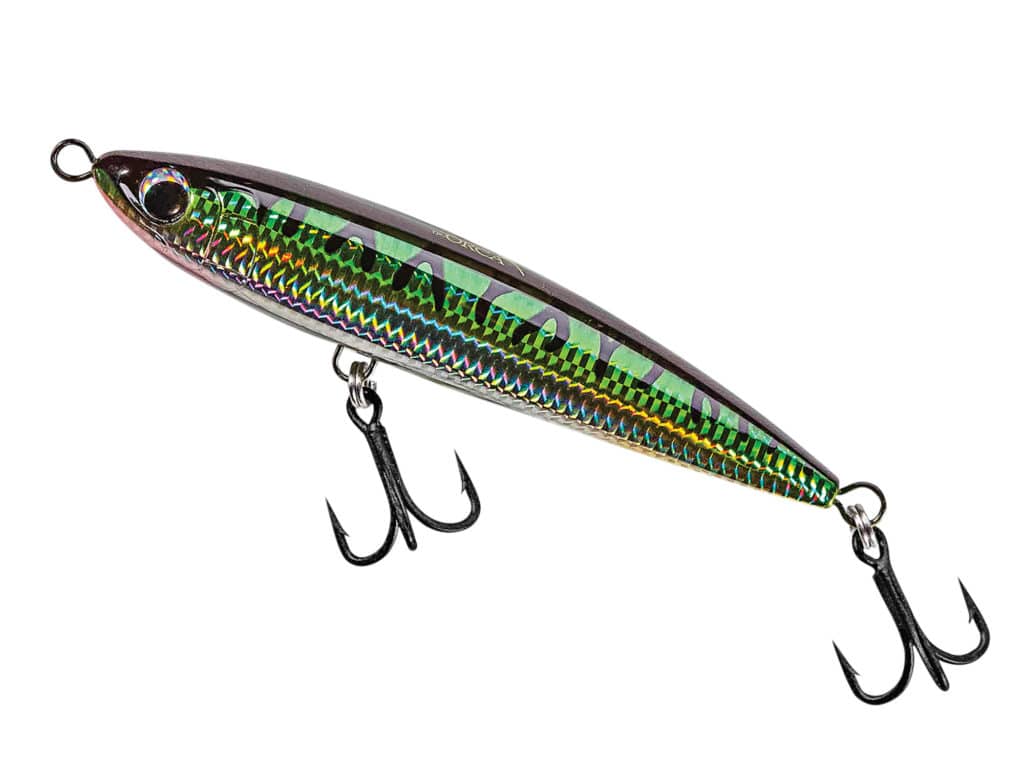
TOP STICKBAITS
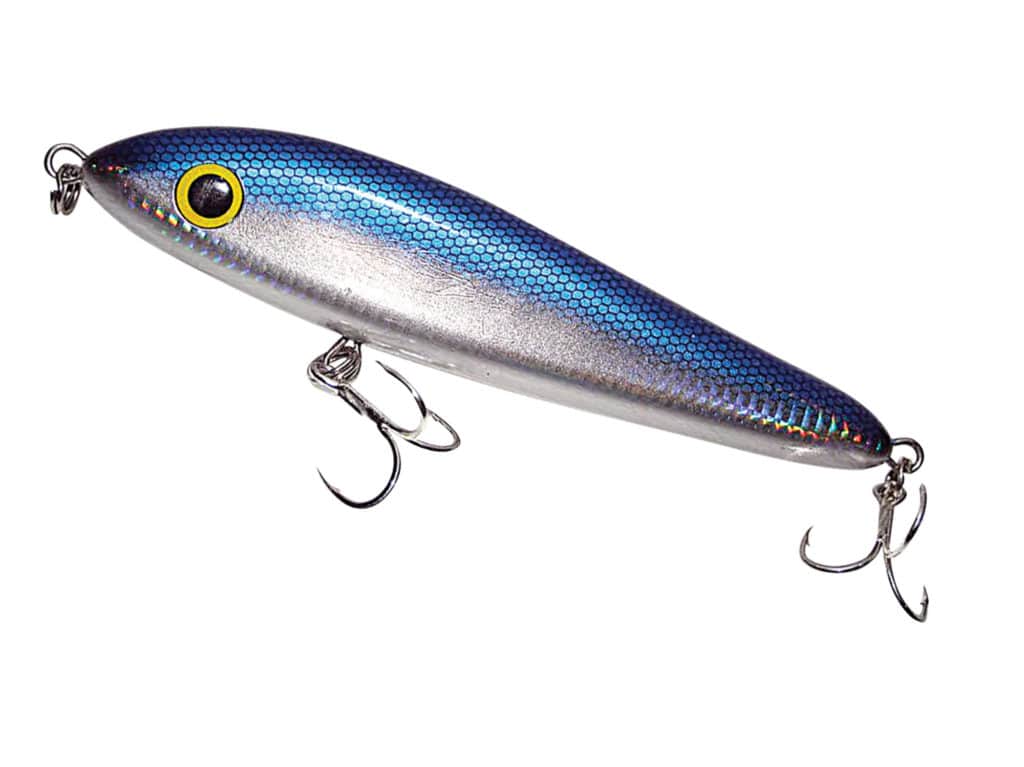
TOP STICKBAITS
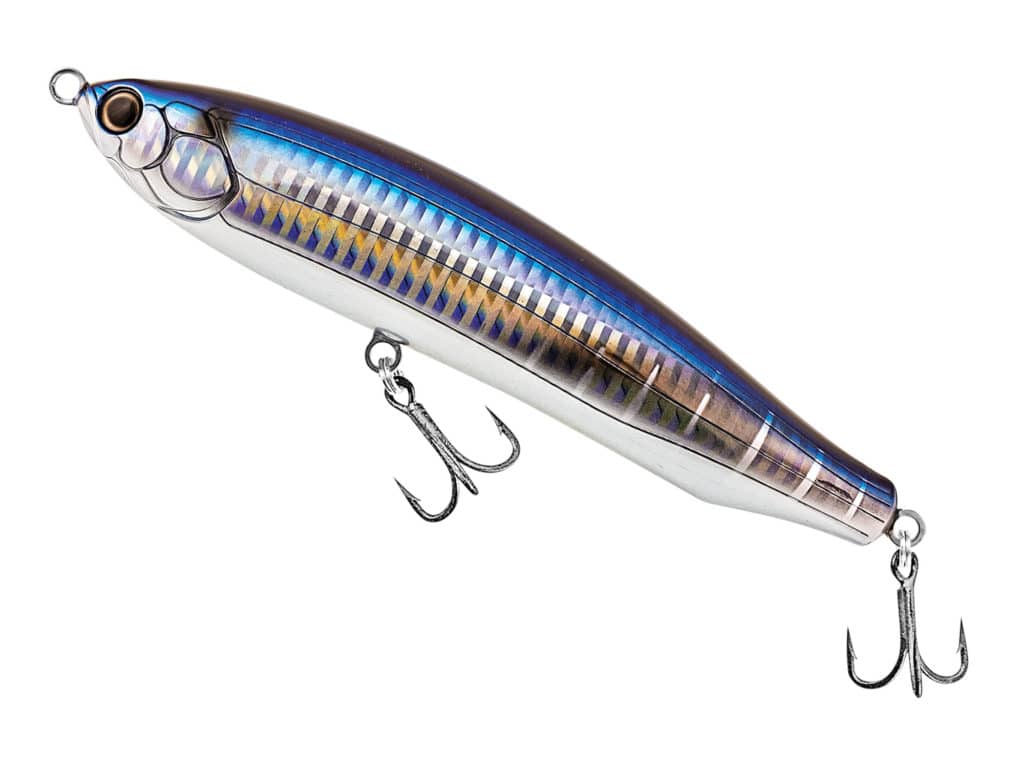
TOP STICKBAITS
